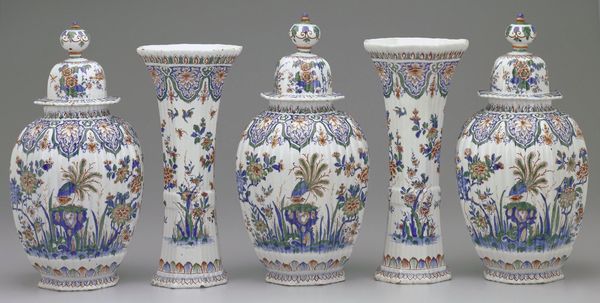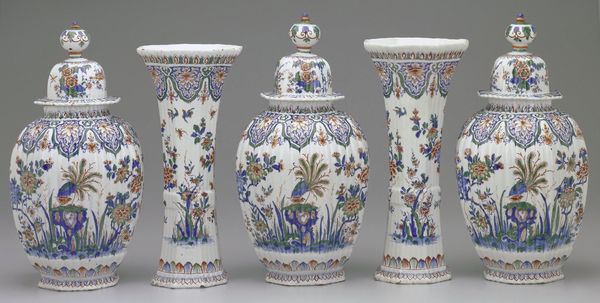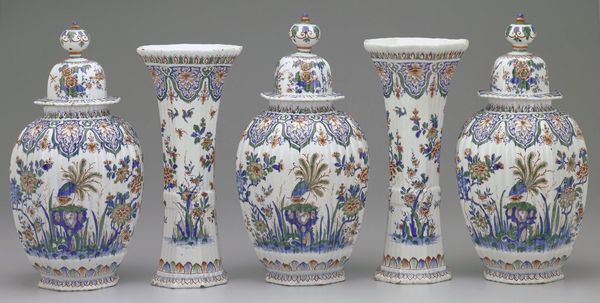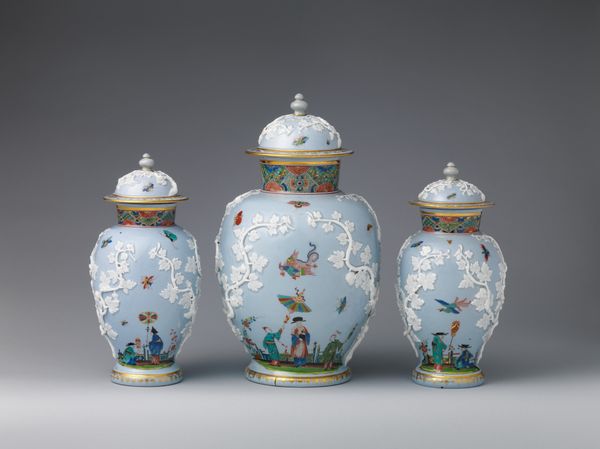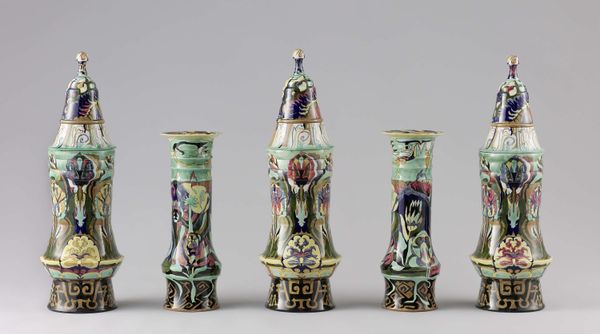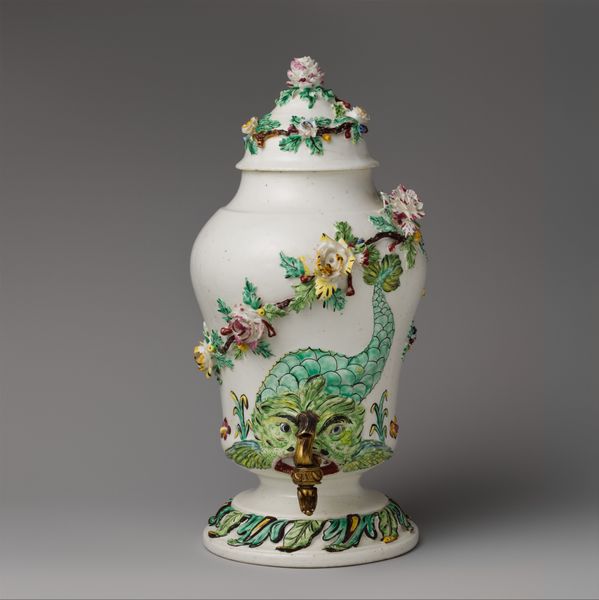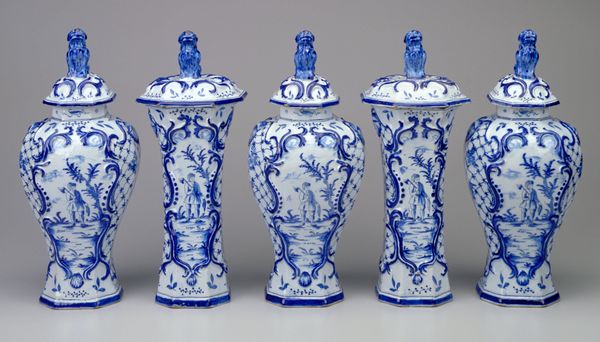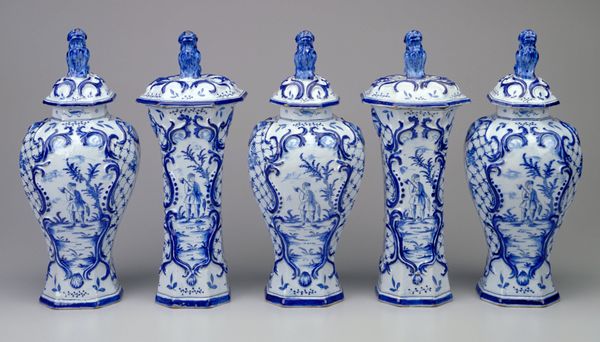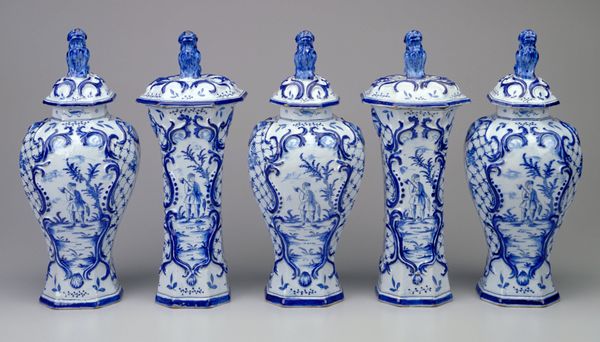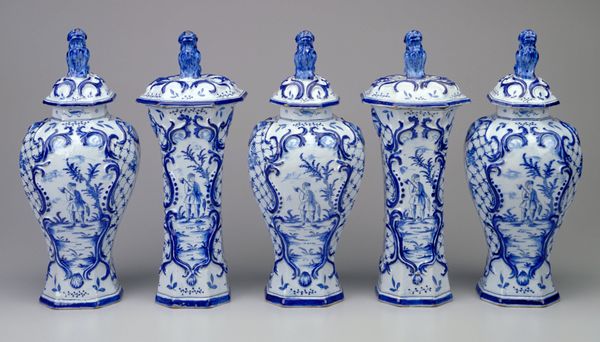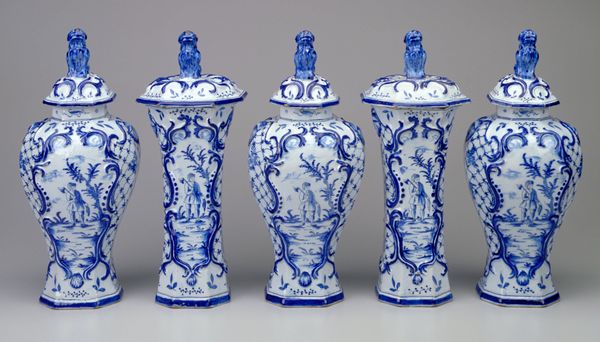
ceramic
#
baroque
#
ceramic
#
ceramic
#
decorative-art
Dimensions: 14 11/16 x 6 15/16 x 6 5/8 in. (37.3 x 17.6 x 16.8 cm)
Copyright: Public Domain
Editor: These are a set of ceramic vases from around 1710, currently housed at the Minneapolis Institute of Art. They are baroque and really quite striking. What can you tell me about them? Curator: These vases speak volumes about cultural exchange and power dynamics of the 18th century. Baroque art, traditionally associated with European courts, often appropriates and reinterprets motifs from other cultures, particularly from Asia. Note the floral designs – where do you think they draw inspiration? Editor: China, perhaps? Curator: Exactly. There was a huge fascination with Chinoiserie at the time. But this isn't just imitation; it’s about European artisans asserting their dominance. They're taking these motifs, changing their context, and embedding them within a European aesthetic to signify wealth, status and control. Who had access to these goods at this time, and who was excluded? Editor: It sounds like a complicated way to express your dominance. What does this appropriation tell us about power dynamics and artistic expression at the time? Curator: These ceramics show us that what we perceive as purely "decorative" art is actually deeply embedded in societal power structures, with elites consuming goods as they display not just artistry but social power. They acted as visual affirmations of social stratification. So, by studying art, we unveil layered narratives of identity and ownership. Editor: That's fascinating. I never thought of vases in such a complex light. Thanks for showing me that historical and social context matter greatly to see them fully. Curator: And remember, it's a dialogue, a continual conversation we have with the past, questioning and challenging our understanding of beauty, power, and identity through art.
Comments
No comments
Be the first to comment and join the conversation on the ultimate creative platform.
